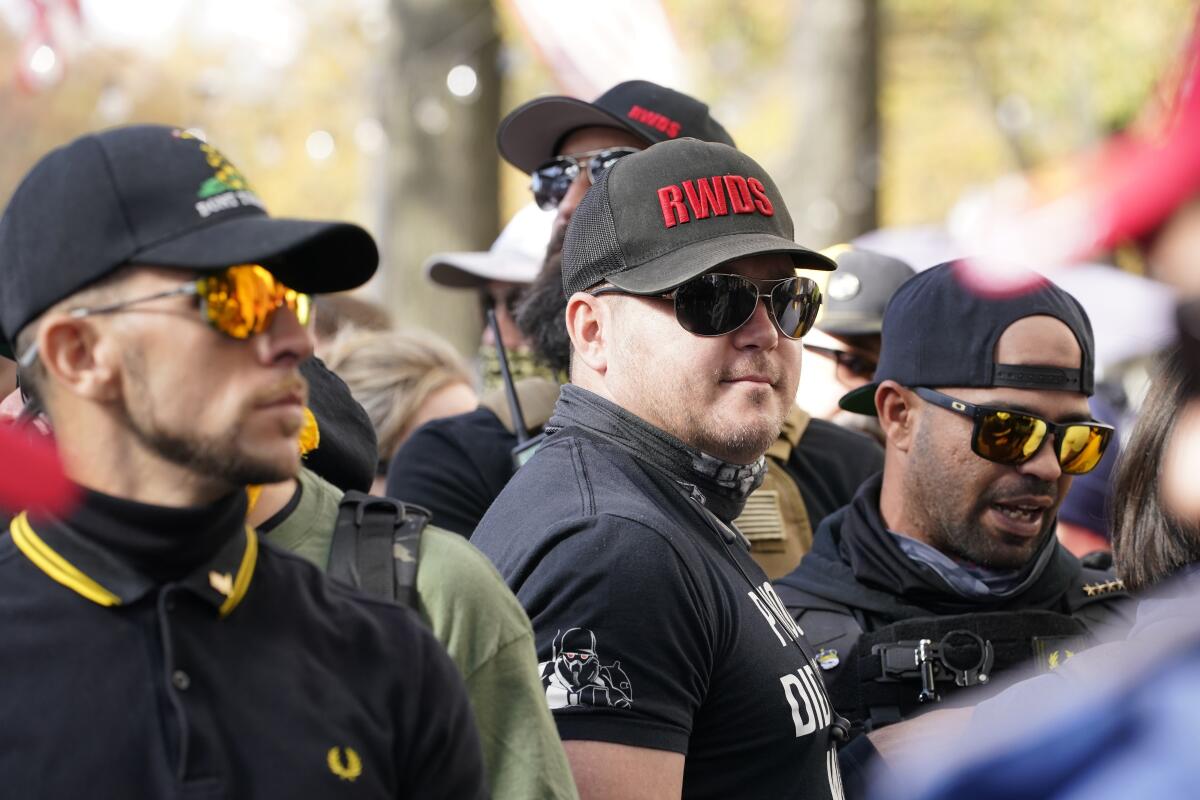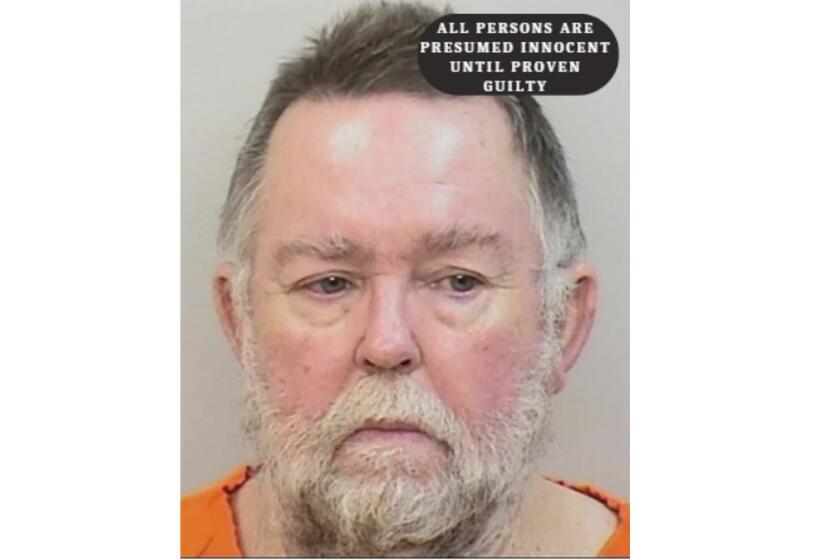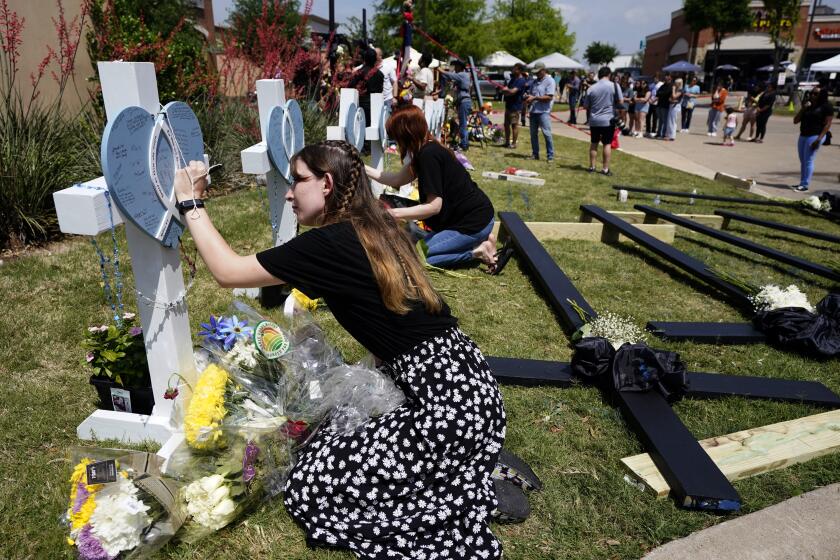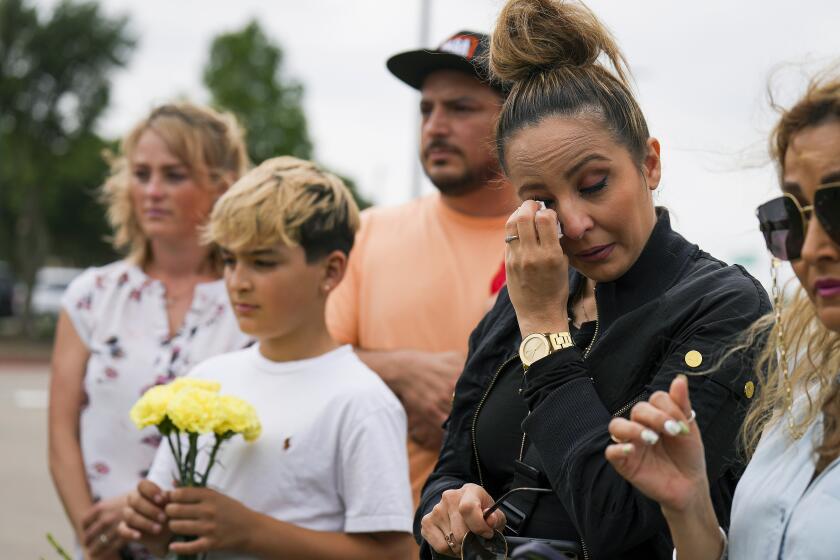Texas shooter’s ‘RWDS’ patch linked to far-right extremists

The shooter who killed eight people at a Dallas-area mall was wearing a patch that read “RWDS” — short for Right Wing Death Squad — a phrase that has been embraced in recent years by far-right extremists who glorify violence against their political enemies.
Authorities have not said what they believe might have motivated 33-year-old Mauricio Garcia, who was killed by a police officer who happened to be near the mall Saturday when Garcia opened fire.
Posts by Garcia on a Russian social networking site expressed a fascination with white supremacy and mass shootings. Photos he posted showed large Nazi tattoos on his arm and torso, including a swastika and the SS lightning bolt logo of Hitler’s paramilitary forces.
Here is a look at the term Right Wing Death Squad and how it became a popular symbol among violent extremists:
WHAT’S THE HISTORY OF THE TERM?
The RWDS acronym is one of countless shorthand terms used by extremists. Others include “RaHoWa,” short for Racial Holy War, and “ 1488,” an alphanumeric code combining references to a white nationalist slogan and Adolf Hitler.
The term Right Wing Death Squad originally emerged in the 1970s and ’80s to describe Central and South American paramilitary groups created to support right-wing governments and dictatorships and oppose perceived enemies on the left, said Oren Segal, vice president of the Anti-Defamation League’s Center on Extremism.
It reemerged in the 2010s among right-wing groups who use it on stickers, patches and in online forums. Other far-right gear and online memes specifically glorify Gen. Augusto Pinochet, the brutal Chilean military dictator whose death squads killed thousands of political opponents.
“It essentially became a phrase that was co-opted to demonstrate opposition to the left more broadly by right-wing extremists,” Segal said.
A Louisiana man is arrested on suspicion of aggravated assault and battery after shooting at children playing hide-and-seek outside his home, wounding one.
Heidi Beirich, co-founder of the Global Project Against Hate and Extremism, said the Proud Boys, the neo-fascist group of self-described “Western chauvinists,” are largely responsible for injecting RWDS into the far-right vernacular.
The group has sold patches and T-shirts adorned with the acronym and celebrating Pinochet’s death squads. Proud Boys have been photographed wearing RWDS caps and patches at rallies and wearing T-shirts that read, “Pinochet did nothing wrong.”
Photos shared on social media appeared to show former Proud Boys national chairman Enrique Tarrio and another former Proud Boys leader, Jeremy Bertino, among those who have worn such patches.
Tarrio was convicted last week of seditious conspiracy in the Jan. 6, 2021, attack on the U.S. Capitol for what prosecutors have described as a violent plot to keep President Trump in power. Bertino, who was vice president of the South Carolina Proud Boys chapter, previously pleaded guilty to seditious conspiracy in the Jan. 6 riot.
WHICH GROUPS HAVE EMBRACED IT?
The Proud Boys aren’t the only far-right extremists to adopt the term.
Right Wing Death Squad was the name of the smaller groups that participated in the white nationalist “Unite the Right” rally in Charlottesville, Va., in August 2017, according to the Anti-Defamation League. The rally turned deadly when a white supremacist rammed his car into a crowd of counterprotesters, killing a woman.
Facebook banned several hate-filled pages, including one named ‘Right Wing Death Squad, after the bloodshed in Charlottesville, the New York Times reported.
“It has really become something over the past couple years that has cut across and far beyond any individual group,” said Jon Lewis, a research fellow at the Program on Extremism at George Washington University.
The eight people killed when a gunman opened fire at a mall near Dallas represent a cross-section of the area’s increasingly diverse suburbs.
“It has kind of become this rallying cry to some extent: This is what we want, to seize the levers of democratic power, just like Pinochet did, and we want to use the power of the state to then engage in violent genocide effectively against whoever is against us,” he said.
American University professor Cynthia Miller-Idriss, director of the school’s Polarization and Extremism Research & Innovation Lab, said extremists who adopt these terms and symbols often don’t fully understand their origins.
“Nobody is going to accidentally have a Right Wing Death Squad patch,” she said. “But it’s because of this whole meme culture, and generally the way that iconography is used to signal encoded speech or messages, they don’t always know exactly” what it means.
WHITE SUPREMACIST GROUPS HAVE NONWHITE MEMBERS?
Far-right extremist groups like the Proud Boys often point to their Black and Latino members to rebut claims that they promote racism or white supremacist ideologies. Tarrio, the former Proud Boys leader, is Cuban American, for example.
The Daily Stormer, a leading neo-Nazi website, launched a Spanish-language edition in 2017 tailored for readers in Spain and Latin America.
Some Latinos identify as white. But those who don’t “can still be attracted to and support movements that are inherently or explicitly white supremacist,” said Miller-Idriss, author of “Hate in the Homeland: The New Global Far Right.”
The man who killed eight people at a Texas mall was discharged from the Army because of mental health issues, neighbors and an Army official said.
“And that is the same way that women can support patriarchal or male supremacist movements,” she added.
Tanya Hernández, a law professor at Fordham University and author of “Racial Innocence: Unmasking Latino Anti-Black Bias,” said Latinos are often viewed “as an unwanted other” in the U.S.
“If you are a Latino who is already affected by being viewed as other and want desperately to be part of the club that is the U.S., what better way to make a claim … than to be part of the enforcement, the policing of whiteness within a white supremacist hate group?” she said.
Associated Press writer Michael Balsamo in New York contributed to this report.
More to Read
Sign up for Essential California
The most important California stories and recommendations in your inbox every morning.
You may occasionally receive promotional content from the Los Angeles Times.













